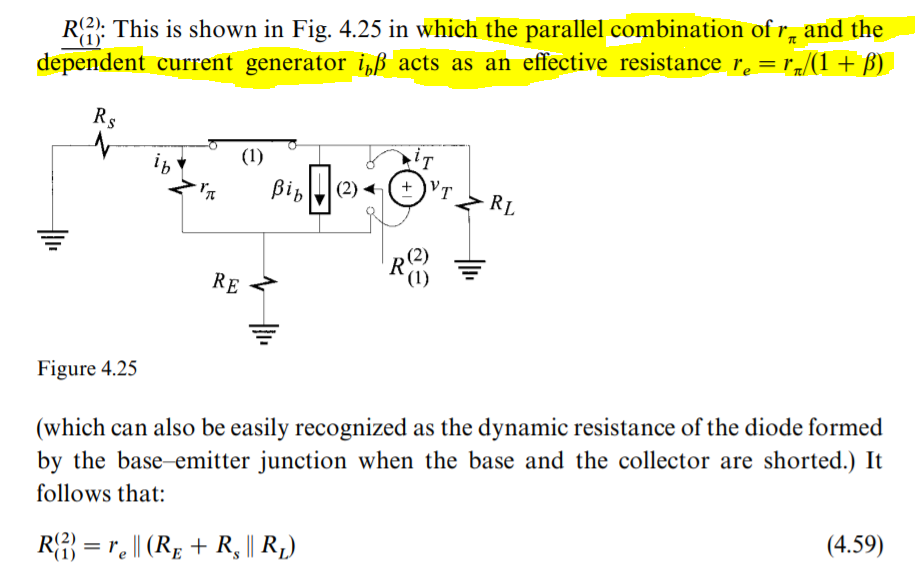I'm currently reading Vorperian's book on Fast Analytical Circuits techniques. On page 129 he states :
I'm not sure I understand correctly the statement I highlighted in yellow. Is it some kind of use of the Norton<->Thevenin conversion?
If anybody could make me understand what he means mathematically and/or schematically.
I know the resistance reflection rule in a BJT, but I'm not sure I understand it in terms of "parallel combination between \$i_b \beta\$ and \$r_{\pi}\$".
It doesn't seem the resulting equivalent circuit has \$r_e\$ in series with \$R_E\$ given eq. 4.59.
Any help will be appreciated. Thanks!

